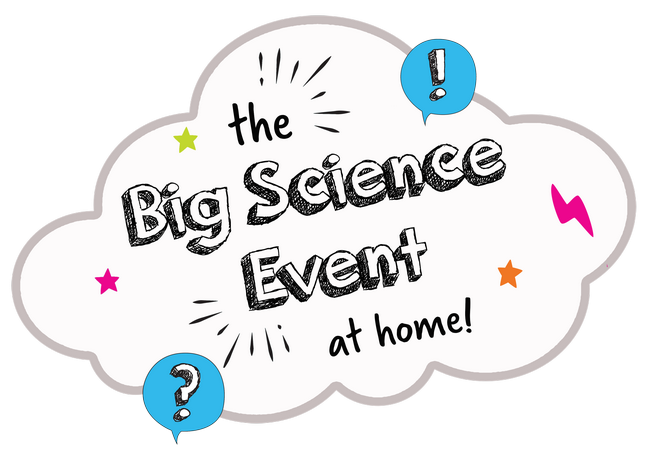Getting Started
Here’s a step-by-step guide to getting started on your investigation for the Big Science Event at Home:
1. What question do you really want to find the answer to?
What are you curious about? Have a look around your house or your garden. Ask yourself Why? How? What if? Talk to people in your family or teachers at school about possible ideas. Try to think of more than one investigation question if you can, because you’ll find that some are easier to design experiments for than others.
To get you thinking, our investigation question ideas. We’ve also written a guide for parents and teachers. And if you’re really stuck, take a look at these simple activity ideas…
2. Decide how to investigate your question
Next you’ll need to work out how to investigate your question, so spend some time planning. What sort of investigation do you need to do? Are you going to be observing something over time, researching something on the internet, collecting data and seeing if you can spot a pattern, or carrying out a ‘fair test’? It needs to be something you can do safely at home or school, so it’s important to think about the risks. Have a look at our investigation planning and risk assessment templates to help you.
At this stage, if you can’t carry your investigation safely, don’t worry – go back to step 1. You might be able to adapt your question rather than change it completely.
3. Make a list of the equipment and materials you need
You’ll need to select things you can find around the house or get hold of easily. You’ll discover that you really don’t need ‘science equipment’ in order to be scientific.
4. Decide what are you going to measure
For some types of science investigation, such as a ‘fair test’, you will find you need to measure something. When we do a ‘fair test’ in science we change just one thing, and measure the impact of this on one other thing, keeping everything else about the experiment exactly the same. Are you measuring how long something takes or recording what happens in a time frame? Are you measuring distance such as how tall, short or far, and are there other ways of doing it if you don’t have a tape measure? Perhaps you are measuring mass, area, volume or temperature.
5. Decide who will help you and how you will work together
Do you need someone else to help you? What do you need them to do and how can you best work together? Sometimes it’s easiest for one person to carry out a practical task and someone else to take the measurements or to record what you are doing by taking photos or video. If you are working with other people take time to talk and agree together who is doing which bit. You could work with a member of your family, some friends on Zoom, or part of a group at your school.
6. Think about how you are going to share what you have done and what you have discovered
Remember, there are many ways you can do this. You can write it down, draw pictures, create slides or a poster, take photos or make a video. We want to know what your investigation question was and we are interested in who you worked with, what you did, what equipment you used, what your results were and what conclusions you came to. What challenges did you face? What worked well and what went wrong? If you had time to do it all again is there anything you would change? If you need help, see our investigation planning sheet.
7. Investigate!
Remember, science investigations don’t always work as planned, and you may not get the results you were expecting, or you might find it hard to reach any firm conclusions. You may not manage to get any results at all! Don’t worry – this is so often what real science looks like, and the Big Science Event at Home is about celebrating and rewarding the process of doing science more than anything else. You can still learn a lot from carrying out your investigation, and we’d still love to hear about it!
8. Questions?
For more information, have a look at our Frequently Asked Questions.

